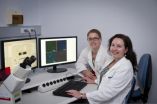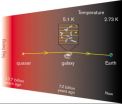(Press-News.org) CORVALLIS, Ore. – Residents living near an e-waste recycling site in China face elevated risks of lung cancer, according to a recent study co-authored by Oregon State University researchers.
Electronic trash, such as cell phones, computers and TVs, is often collected in dumps in developing countries and crudely incinerated to recover precious metals, including silver, gold, palladium and copper. The process is often primitive, releasing fumes with a range of toxic substances, including polycyclic aromatic hydrocarbons, or PAHs, a group of more than 100 chemicals.
PAHs, many of which are recognized as carcinogenic and linked to lung cancer when inhaled, were the focus of the study. Over the course of a year, researchers collected air samples from two rooftops in two areas in China.
One was in a rural village in the southern province of Guangdong less than a mile from an active e-waste burning site and not surrounded by any industry. The other was Guangzhou, a city heavily polluted by industry, vehicles and power plants but not e-waste.
The scientists concluded that those living in the e-waste village are 1.6 times more likely to develop cancer from inhalation than their urban-dwelling peers.
"In the village, people were recycling waste in their yards and homes, using utensils and pots to melt down circuit boards and reclaim metals," said Staci Simonich, a co-author of the study and a professor of environmental and molecular toxicology at OSU. "There was likely exposure through breathing, skin and food – including an intimate connection between e-waste and the growing of vegetables, raising of chickens and catching of fish."
The researchers estimated that of each million people in the e-waste area, 15 to 1,200 would develop lung cancer on account of PAHs over their lifetimes, while the likelihood in the city is slightly lower at 9 to 737 per million. These approximations do not include lung cancer caused by smoking.
The study also found that the level of airborne carcinogenic PAHs exceeded China's air quality standards 98 percent of the time in the e-waste area and 93 percent of the time in the city.
The study was published in the journal Environmental Science and Technology. The OSU Superfund Research Program provided assistance for the study. The National Institute of Environmental Health Sciences (NIEHS) and the National Institutes of Health (NIH) provided funding for the study.
Eight researchers collaborated on the project, including OSU graduate student Leah Gonzales and scientists from China.
### Note to Editors: For a copy of the published journal article, contact Daniel Robison at Daniel.Robison@oregonstate.edu.
The following downloadable photo is available for use in the media:
Chemist Staci Simonich examines a vial containing air pollutants at her lab at Oregon State University. She co-authored a study that found that residents in an rural Chinese village near an electronic waste dump are 1.6 times more likely to develop lung cancer than their peers in the heavily polluted Chinese city of Guangzhou. (Photo by Tiffany Woods.) www.flickr.com/photos/oregonstateuniversity/8405181287/
Residents near Chinese e-waste site face greater cancer risk
2013-01-23
ELSE PRESS RELEASES FROM THIS DATE:
Plants adapt to drought but limits are looming, study finds
2013-01-23
Scientists with the U.S. Department of Agriculture, or USDA, and their partners have determined that water demand by many plant communities can fluctuate in response to water availability, indicating a capacity for resilience even when changing climate patterns produce periodic droughts or floods.
But their research also suggests that a limit to this resilience ultimately could threaten the survival of these plant communities. Sensitive environments such as the arid grasslands in the Southwestern U.S. already are approaching this limit.
Results from this study were published ...
Immune cell death defects linked to autoimmune diseases
2013-01-23
Melbourne researchers have discovered that the death of immune system cells is an important safeguard against the development of diseases such as type 1 diabetes, rheumatoid arthritis and lupus, which occur when the immune system attacks the body's own tissues.
The finding suggests that these so-called autoimmune diseases could be treated with existing medications that force long-lived immune system cells to die.
In the development of the immune system, some cells are produced that have the potential to attack the body's own tissues, causing autoimmune disease. The death ...
CSIRO telescope takes temperature of Universe
2013-01-23
Astronomers using a CSIRO radio telescope have taken the Universe's temperature, and have found that it has cooled down just the way the Big Bang theory predicts.
Using the CSIRO Australia Telescope Compact Array near Narrabri, NSW, an international team from Sweden, France, Germany and Australia has measured how warm the Universe was when it was half its current age.
"This is the most precise measurement ever made of how the Universe has cooled down during its 13.77 billion year history," said Dr Robert Braun, Chief Scientist at CSIRO Astronomy and Space Science.
Because ...
Studies provide insights into inherited causes of autism
2013-01-23
The most consistent finding of autism research lies in the revelation that the disorders are incredibly complex. Two new studies in the January 23 issue of the Cell Press journal Neuron that add to the growing appreciation of this complexity focus on identifying inherited genetic mutations linked with autism spectrum disorders. The mutations—which are distinct from the spontaneous mutations that have been the focus of previous studies—may provide valuable insights into the causes of autism.
"It's long been known that autism is a heritable condition and that some cases ...
New brain circuit sheds light on development of voluntary movements
2013-01-23
DURHAM, N.C. – All parents know the infant milestones: turning over, learning to crawl, standing, and taking that first unassisted step. Achieving each accomplishment presumably requires the formation of new connections among subsets of the billions of nerve cells in the infant's brain. But how, when and where those connections form has been a mystery.
Now researchers at Duke Medicine have begun to find answers. In a study reported Jan. 23, 2013, in the scientific journal Neuron, the research team describes the entire network of brain cells that are connected to specific ...
Whole-exome sequencing identifies inherited mutations in autism
2013-01-23
Boston, Mass. - While autism clearly runs in some families, few inherited genetic causes have been found. A major reason is that these causes are so varied that it's hard to find enough people with a given mutation to establish a clear pattern. Researchers at Boston Children's Hospital have pinpointed several inherited mutations—among the first to be identified—through an unusual approach: using whole-exome sequencing to study large Middle Eastern families with autism.
The study, published in the January 23 issue of the journal Neuron, also found evidence for some of ...
Setting the dark on fire
2013-01-23
In space, dense clouds of cosmic gas and dust are the birthplaces of new stars. In visible light, this dust is dark and obscuring, hiding the stars behind it. So much so that, when astronomer William Herschel observed one such cloud in the constellation of Scorpius in 1774, he thought it was a region empty of stars and is said to have exclaimed, "Truly there is a hole in the sky here!" [1]
In order to better understand star formation, astronomers need telescopes that can observe at longer wavelengths, such as the submillimetre range, in which the dark dust grains shine ...
Researchers design a new imaging technique for identifying the age and sex of a corpse
2013-01-23
Researchers at the University of Granada, Spain, have designed a new computing system that determines the age and sex of a corpse with a reliability of 95%. This system is based on free software called Image and a free DICOM displayer called K-Pacs. This state-of-the-art system is very different from the traditional macroscopy systems used to evaluate the osteoarticular features of a corpse, and it is much faster and user-friendly.
The author of this study is Manuel López Alcaraz, a researcher at the Forensic Anthropology Laboratory of the University of Granada, in collaboration ...
Astrocytes identified as target for new depression therapy
2013-01-23
BOSTON (January 23, 2013) — Neuroscience researchers from Tufts University have found that our star-shaped brain cells, called astrocytes, may be responsible for the rapid improvement in mood in depressed patients after acute sleep deprivation. This in vivo study, published in the current issue of Translational Psychiatry, identified how astrocytes regulate a neurotransmitter involved in sleep. The researchers report that the findings may help lead to the development of effective and fast-acting drugs to treat depression, particularly in psychiatric emergencies.
Drugs ...
Type 1 diabetes in urban children skyrockets, increasing by 70 percent in children under age 5
2013-01-23
Over the past two decades, the incidence of type 1 diabetes in very young children under age 5 has increased by 70 percent in the city of Philadelphia, according to research from a University of Pennsylvania School of Nursing researcher who currently maintains the only US registry of diabetes in children that has collected data continuously since 1985.
In a far-reaching study in the current issue of Diabetes Care, researchers led by nursing professor Terri H. Lipman, PhD, RN found that the overall incidence of Type 1 diabetes in children in Philadelphia has increased ...




